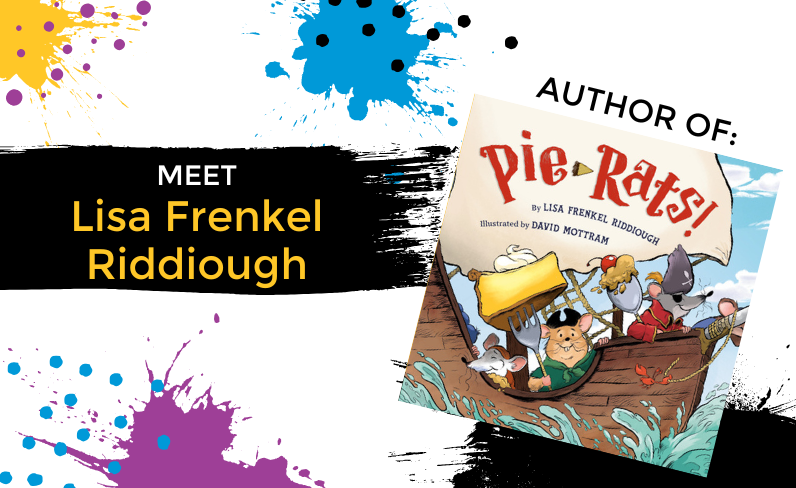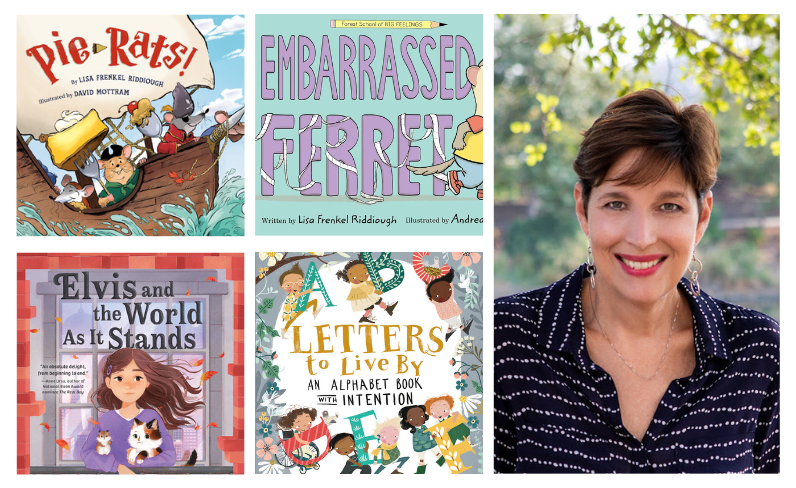Hello Inklings!
This month’s Ink Splat Author Interview features Lisa Frenkel Riddiough, author of Elvis and the World as it Stands, Letters to Live By, Pie-Rats!, and the forthcoming, Embarrassed Ferret.
At Inklings this month, we’re talking about crafting vibrant worlds for our stories. You’ll find lots of tips and insight from Lisa in our interview about how to bring the world of a story alive for readers, how to create the captivating characters who inhabit them, and how to tap into your own perspective and expertise to make your writing expressly your own.
Learn more about Lisa Frenkel Riddiough at lisariddiough.com.
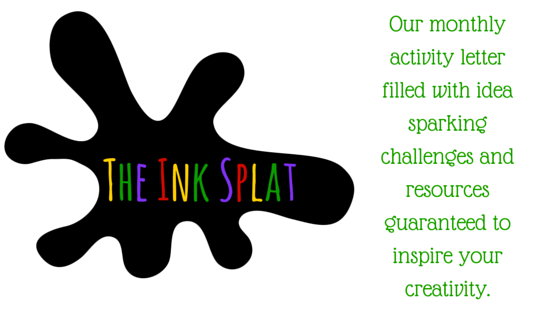
Writing Challenge
As you’ll see in the interview below, Lisa uses a classic Inklings exercise to build the worlds of her stories: the map. We sometimes invite you to map the entire world of a story to learn more about the way the society works, the overall weather and geographical environment, and opportunities for you as a storyteller to create conflict and interest using your setting creates.
Lisa reminds us that you can use a map to detail a specific setting in your story, too, making it easier to bring that setting to life. You can map not only the physical details, but use your other senses to bring your map to life, too. For instance, where do significant scents come from, such as freshly popped popcorn or steaming hot cocoa? Where are those details in the space? How about sounds? Is there music playing from a speaker, a bird singing from a branch, or a toddler giggling in the sandbox?
Your writing challenge is to choose an interesting setting, such as Lisa’s roller skating rink. You can choose a setting you know from your real life, like Lisa did, or invent one of your own design. Map the space making sure to note details that appeal to each of your five senses. Then, write a short scene that makes use of that interesting space, including opportunities for your characters to interact with the objects you’ve mapped. How might you use the objects to add coziness, conflict, or humor? Have fun making a vibrant scene, and when you’ve finished, don’t forget to share it at the link below!
Tell us how you go about world building. How do you bring your story worlds alive?
For me, world building always begins with introspection on the worlds of my own life, the places I’ve lived in or visited and the rules of existence in those places. I love the exercise of drawing detailed maps of the settings of our lives. These maps can serve as templates for creating fictional settings. For example, my work-in-progress is set in a roller-skating rink. I drew a detailed map from memory of the rink I skated at in the 1970s, including all the sounds, smells, sights, and feelings that came with it. This became the physical setting for my main character, a mouse. But then I had to build out the rules of this world, the way in which a mouse community would exist at this roller-skating rink. My world building comes down to two key steps: draw a detailed map of the setting and determine the rules of existence in that place.
When you’re ready to start a new story, what is your process like?
Before I even begin writing, I spend a lot of time (sometimes years) thinking about the story. I love this part, because I am not yet up against the hard work of drafting. I am dreaming and wondering and planning, without yet putting pen to paper (or fingers to keyboard). This part of the writing process is crucial – and it counts. Once I have finished a draft, and a critique partner or editor has identified something that is not working, I accept with gusto the challenge of finding that missing piece of the puzzle. When there is some element of my story that is not yet correctly in place, I can’t wait to discover solutions. It can be frustrating and perplexing, but once that puzzle piece is determined and locked into place, joy and satisfaction abound.
You might be able to tell that the actual drafting part is not my favorite. I have to make a schedule and force myself to do the work. This is when the real magic happens. Inevitably, when I sit down and make myself write a verse or a chapter, something surprising results. It is what keeps me going day after day.
We know you love wordplay and we see that joy and enthusiasm in your work! Tell us a bit about incorporating wordplay into your writing.
You had me at wordplay. Ok, this a play on “You had me at hello,” from the movie Jerry Maguire. Once I get started on wordplay, hours melt away. Most of my ideas begin with a play on words. Why? Because it’s fun.
When I am writing picture books especially, wordplay is crucial. But it is crucial in all of our writings. We want every single word we choose to do its best job. Whether it is to create vivid imagery, provide side-splitting humor, or merely sound pleasing to our ears, choosing the right words is our most important job as writers. My book, PIE-RATS! began with my desire to write a rhyming picture book about food. I started with a word bank on all my favorite foods. Once I landed on pie, I kept it going until I had a band of swashbuckling rodents in search of dessert. I scoured my dictionary for delectable words to surprise and delight. And I made sure that my rhymes were unexpected. Pie-rats don’t want gold doubloons, their bounty comes on forks and spoons. When it comes to wordplay, the dictionary is your playground and the thesaurus is your BFF.
We all hit slumps sometimes. What do you like to do when you’re feeling creatively sluggish?
I’ll start by saying that I am not one who is lacking in ideas. My problem is zeroing in on one of them and seeing it through to completion. Sometimes my abundance of ideas can be exhausting. I can’t pick one and focus. This is when I go to another type of creative project. I have several waiting in the wings, but my favorite one is needlepoint. Working on needlepoint allows me to be both productive and mindless. I usually listen to music or a podcast while I’m working. The use of my hands and the tactical elements involved allow my mind to relax and my ideas and thoughts to settle a bit. As writers, we are first creatives. Having a back-up creative project is vital for your brain to get some relief when writing becomes too frustrating or difficult. For me, it’s needlepoint. But it could be baking or gardening or playing the guitar or getting out your old crayons and coloring. None of this is wasted time. You’ll come back to your writing refreshed and ready.

A special thank you to Lisa Frenkel Riddiough for sharing with us!
Lisa Frenkel Riddiough was a slow reader as a child and found it difficult to concentrate on almost all required reading. When given the choice, Lisa picked books with pictures and lots of white space, and always stories with animals. As a children’s book author, Lisa strives to make her books accessible to this type of reader. In her opinion, it is perfectly OK to choose a book that is short, has a large font, and plenty of illustrations!
Lisa has an MFA in Writing for Children and Young Adults from Hamline University. Her critical thesis was titled, It’s Not Just Talk: How Empathy Elevates When Talking Animals Exist in Contemporary Human Settings – Middle-Grade. In this study, she paid specific attention to the ways in which literary animal and human characters struggle to communicate with one another. It is in this struggle that common ground can be found, ultimately bringing understanding to the characters and expanded empathy to the reader.
Lisa is based in Northern California where she lives with her husband in their empty nest. In addition to writing middle-grade, Lisa writes picture books and “grown-up” short stories and essays. When she is not writing, Lisa enjoys working in the garden, sipping on half-caf iced mochas, and organizing her sprinkle drawer.
She is represented by Jennifer Mattson of the Andrea Brown Literary Agency.
Check out Lisa’s books and all of our recent Ink Splat authors’ works at our Bookshop.org Store.
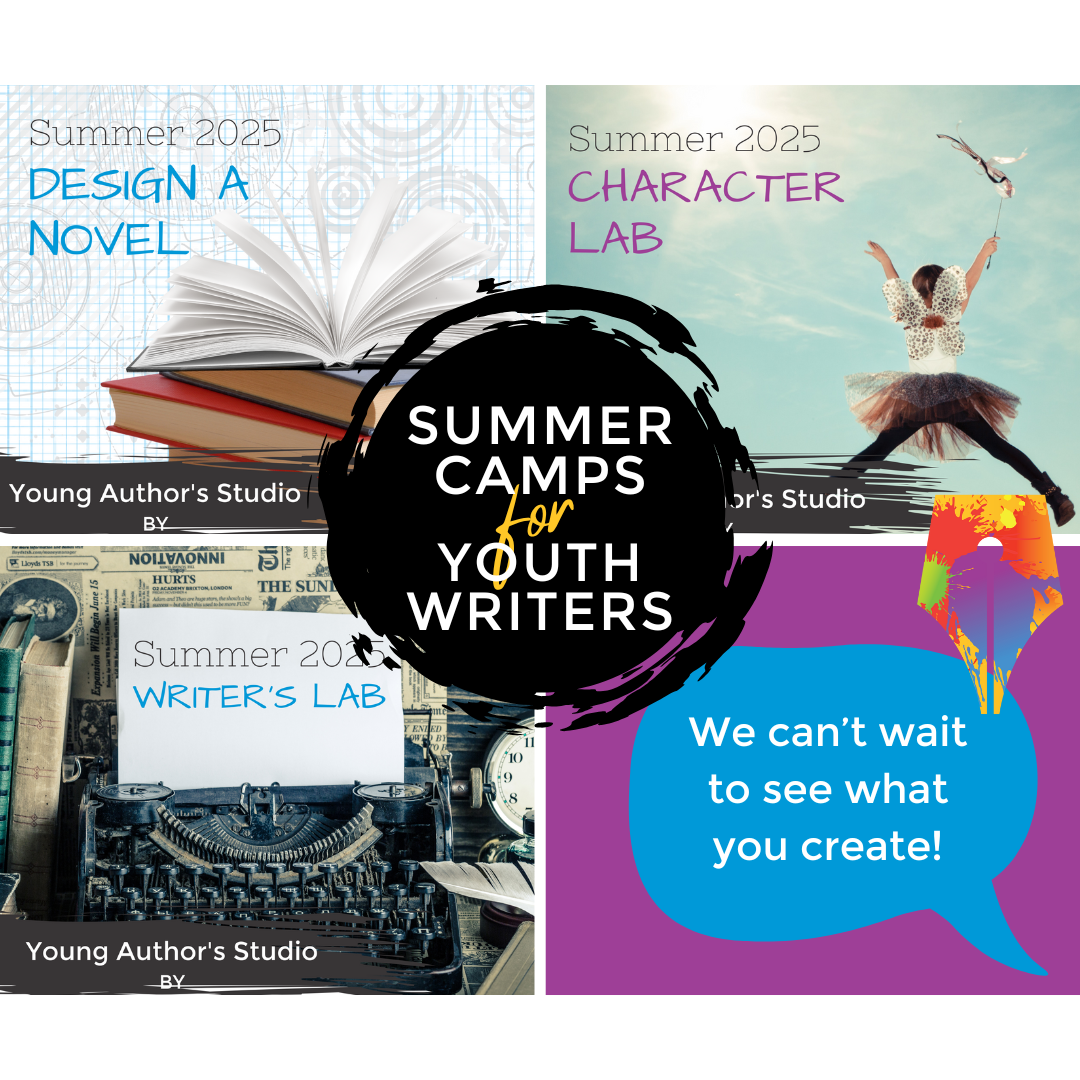
INKLINGS CONNECT
Summer Camps
Join us for a writing camp this summer. We can't wait to see what you create!
Keep your creativity flowing with our upcoming community events:
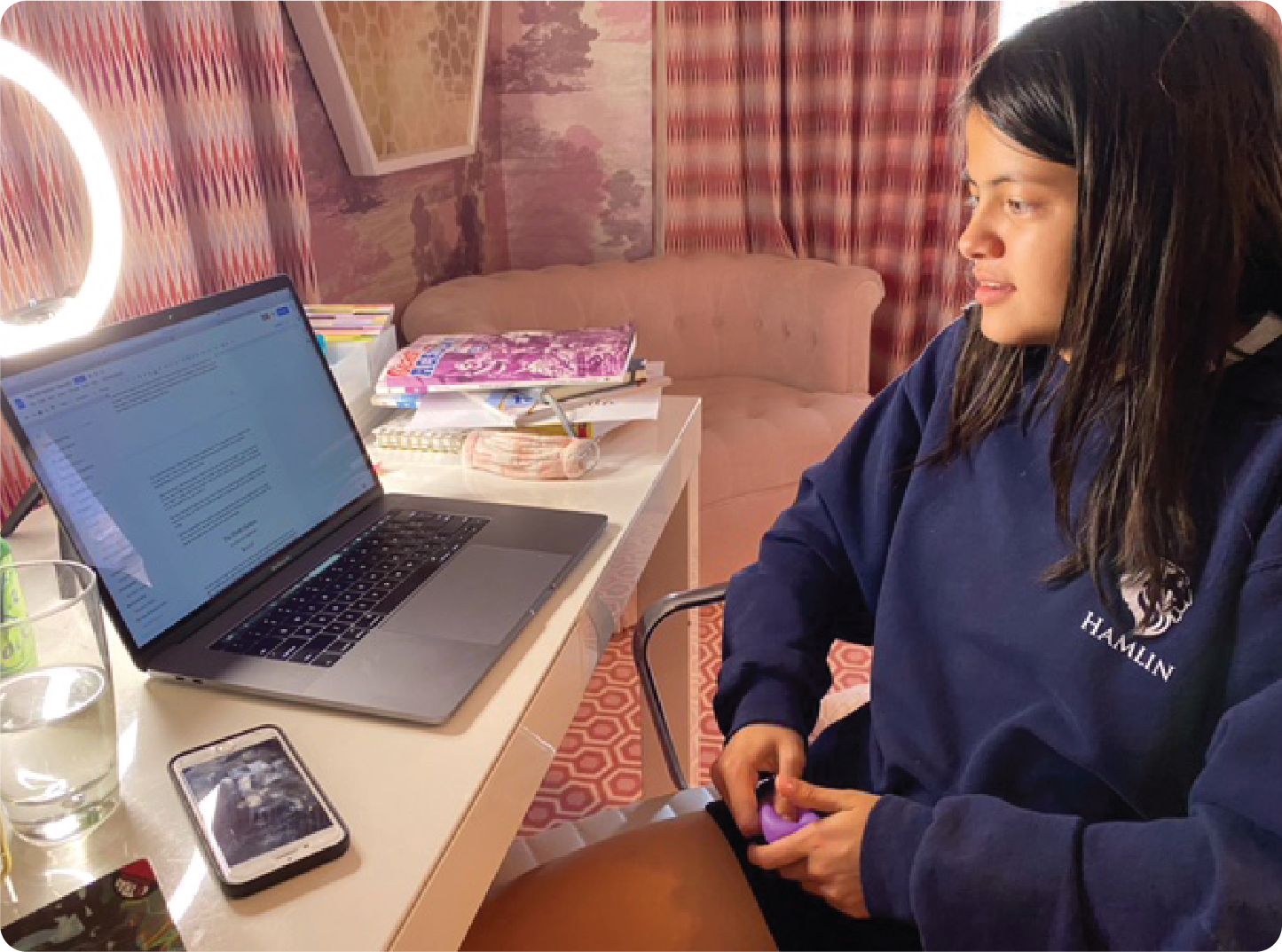
SUBSCRIBE
Subscribe to stay in touch with Society of Young Inklings. You’ll receive our monthly Ink Splat newsletter and be the first to know about upcoming events and ways to connect with Young Inklings.


